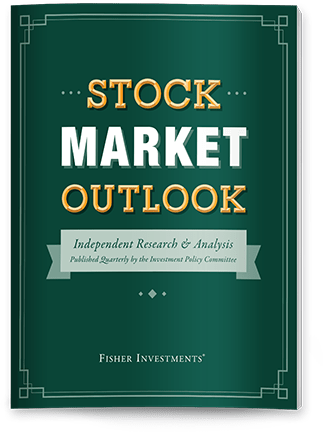Personal Wealth Management / Expert Commentary
This Week in Review | Tariff News, US Jobs Data, GDP Insights, Q2 Earnings (Aug. 1, 2025)
The economy and markets can feel dizzying and ever changing. That’s where we can help. Fisher Investments’ “This Week in Review” is a weekly segment designed to highlight a few things you may have missed this week, what they could mean for financial markets and why they matter to investors like you.
This week, we’ll be covering:
- Recent tariff developments
- What US jobs data could mean for stocks
- Global economic update
- Q2 earnings and what they may reveal
Want to dig deeper?
- Get our latest take on recent tariff developments: https://www.fisherinvestments.com/en-....
- Learn what GDP is and why it is important: https://www.youtube.com/wat....
- Take a closer look at US Q2 GDP: https://www.fisherinvestments.com/en-....
- Read our latest insights on recent jobs data: https://www.fisherinvestments.com/en-....
Have feedback? Share your thoughts on this episode in just 1 minute by filling out this survey: https://fi.co1.qualtrics.com/jfe/form...
Transcript
Scott O’Leary
Hello, and welcome to This Week in Review. Each week we spotlight a few key market developments you might have missed and most importantly, what they could mean for investors. To stay up to date on our latest insights, please be sure to subscribe to our YouTube channel or visit FisherInvestments.com. Now, let's review what happened this week.
First up, the latest in tariff developments.
On Thursday, news broke the US adjusted new tariffs on nearly 70 countries, with rates ranging from 10% to 41% starting on August 7th. Originally, President Trump set the deadline for imposing reciprocal tariffs for August 1st. So, updated tariff rates were expected. And it's notable we have another roughly one week delay. Now, some of the highlights. Canada was hit with a 35% tariff on goods that don't comply with the US, Canada, Mexico Trade Agreement. However, according to RBC, or the Royal Bank of Canada, about 90% of Canadian exports already qualify under the deal, meaning only a small portion of trade will likely be affected.
Other notable targets include Taiwan at 20%, India at 25%, and smaller trading partners like Syria and Myanmar will see rates around 40%. And a new 40% tariff will also apply to trans shipped goods, mainly aimed at Chinese products routed through third countries, though the implementation of all of that remains unclear. Meanwhile, Japan and South Korea secured 15% rates through last minute trade deals and Mexico got a 90 day reprieve. Now, critically, as we've noted, tariffs are facing legal scrutiny. President Trump used a 1977 emergency law to justify the tariffs, and this was a first. The tariffs were ruled unlawful by the US Court of International Trade in May. And yesterday, the case was heard by a federal appeals court, which appeared skeptical, questioning whether the law gives the president power to override Congress on trade. Looking ahead, watch for the August 7th deadline and deals that may be cut in the meantime, as well as the appeals court ruling expected in August and subsequent likely appeal of all of this to the Supreme Court. More headline driven volatility is always possible, but markets are signaling resilience despite evolving trade policy.
And in keeping with the latest news, let's talk the US job market.
This week brought a fresh round of labor data, headlined by the July jobs report released this morning. The US economy added 73,000 jobs, well below expectations. And prior months were sharply revised downward. The unemployment rate ticked up to 4.2% from 4.1, right in line with forecasts. Now, taken together, these numbers point to some softening in the labor market, but in our view, not broad based weakness. More likely, businesses are hitting pause on hiring as they wait for greater clarity on trade policy. Still, many firms appear to be hiring where it counts. And unemployment remains low by historical standards. Now, what should investors take from all of this? Not too much in our view. Jobs data often dominates headlines, but they're lagging indicators telling us what's already happened, not what's coming.
Economic growth and earnings drive hiring, not the reverse. And downward revisions to data aren't unusual. We've seen plenty over the past few years. Yet markets have continued to rise. And of course that's because markets are forward looking. Stocks move on expectations, not backward looking reports that are often revised later. So the bottom line don't place too much weight on any single jobs report. It's part of the story, but not what moves markets.
Next US, eurozone and global economic growth.
We got fresh Q2, GDP or economic growth numbers from both the US and eurozone and both surprised to the upside. The US economy grew at a 3% annualized pace, and the eurozone grew about 0.4% annualized. These figures suggest global growth remains resilient even with lingering tariff concerns. Now, as we've said throughout the year, we expect the global economy to keep expanding in 2025. A steepening global yield curve likely tilts the playing field in favor of non-US economies, but US growth is still holding firm. Important to remember stocks don't need gangbusters GDP growth to rise. They just need reality to beat expectations. Historically, markets tend to price in recessions before they hit. And right now we see a low risk of a global downturn and a generally strong environment for companies to continue growing their earnings and revenue.
Supporting this view, on Tuesday, the International Monetary Fund released its latest World Economic Outlook, nudging up its global growth forecast to 3% in 2025 and 3.1% in 2026. Now, of course, these estimates always need to be taken with a grain of salt, but directionally the global economy is likely to expand. The IMF also struck a less gloomy tone on tariffs, suggesting recent trade friction may not be as damaging as dreaded back in April. And that's consistent with our forecast that tariffs likely bite less than feared. This better than expected reality could be a bullish signal for stocks.
And finally, Q2 earnings.
This week was a big one for Q2 earnings, especially for large US tech firms. So far, the results are painting a fairly strong picture. As of July 31st, around 63% of S&P 500 companies have reported Q2 results, and overall blended earnings growth stands at 9.8% year-over-year and revenue growth at 5.9. Out of the 11 sectors, seven have reported positive earnings growth for the quarter, led by Communications Services, Information Technology and Financials. What's more, 82% of companies are beating earnings expectations, outpacing both the five and ten-year historical averages. That kind of broad based strength suggests businesses are adapting well, even amid a challenging policy environment.
Of course, not everything is rosy. Some companies have flagged tariff related uncertainty as a risk to forward guidance, but we're also seeing firms get creative by rerouting supply chains, lobbying for relief and redesigning operations to minimize tariff exposure. These kinds of adaptations help explain why earnings are holding up better than some feared. Meanwhile, this year's correction and other negative headlines have driven sentiment down. That kind of pessimism lowers the bar for positive surprises. Depressed sentiment against an environment where fundamentals continue to come in better than expected is, in our view, a bullish setup. So, that's it for this week.
Thank you for tuning in to This Week in Review.
If you're looking for more insights, then don't miss our other series, 3 Things You Need to Know This Week, released every Monday. You can also visit FisherInvestments.com anytime for our latest thoughts on markets. Thanks again for joining us, and don't forget to hit "like" and "subscribe!"

Where Might the Market Go Next?
Confidently tackle the market’s ups and downs with independent research and analysis that tells you where we think stocks are headed—and why.




